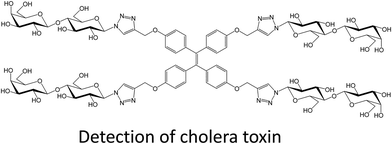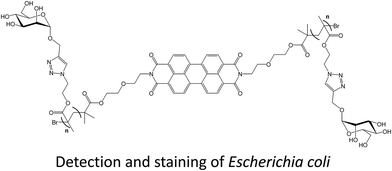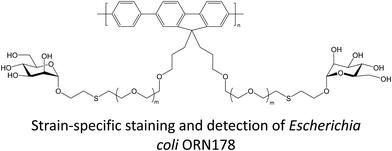 Open Access Article
Open Access ArticleCreative Commons Attribution 3.0 Unported Licence
Correction: Fluorescent glycoconjugates and their applications
Baptiste
Thomas†
a,
Kai-Cheng
Yan†
b,
Xi-Le
Hu
b,
Marion
Donnier-Maréchal
a,
Guo-Rong
Chen
*b,
Xiao-Peng
He
*b and
Sébastien
Vidal
*a
aInstitut de Chimie et Biochimie Moléculaires et Supramoléculaires, Laboratoire de Chimie Organique 2-Glycochimie, UMR 5246, CNRS and Université Claude Bernard Lyon 1, Université de Lyon, 1 Rue Victor Grignard, F-69622 Villeurbanne, France. E-mail: sebastien.vidal@univ-lyon1.fr
bKey Laboratory for Advanced Materials and Joint International Research Laboratory of Precision Chemistry and Molecular Engineering, Feringa Nobel Prize Scientist Joint Research Center, School of Chemistry and Molecular Engineering, East China University of Science and Technology, 130 Meilong Rd., Shanghai 200237, P. R. China. E-mail: mrs_guorongchen@ecust.edu.cn; xphe@ecust.edu.cn
First published on 10th June 2021
Abstract
Correction for ‘Fluorescent glycoconjugates and their applications’ by Baptiste Thomas et al., Chem. Soc. Rev., 2020, 49, 593–641, DOI: 10.1039/C8CS00118A.
The authors regret that there were some incorrect structures in the original article. In Fig. 3 (and in Table 1, entry 1), the triazole ring was incorrect in the top right part of the molecule. In Fig. 4, the triazole ring was incorrect in the top right part of the molecule. In Fig. 15 (and in Table 1, entry 2), the spacer arm was incorrect. In Table 1, entry 13, the linker arm and mannose unit were incorrect. The corrected figures and table entries are shown below.
 | ||
| Fig. 3 Lactosylated TPEs and schematic illustration of fluorescence “turn-on” assay for CT based on the AIE effect. Reproduced from ref. 41 with permission from Wiley-VCH, copyright 2011. | ||
Table 1, entry 1:
Table 1, entry 2:
Table 1, entry 13:
The Royal Society of Chemistry apologises for these errors and any consequent inconvenience to authors and readers.
Footnote |
| † These authors contributed equally to this work. |
| This journal is © The Royal Society of Chemistry 2021 |





